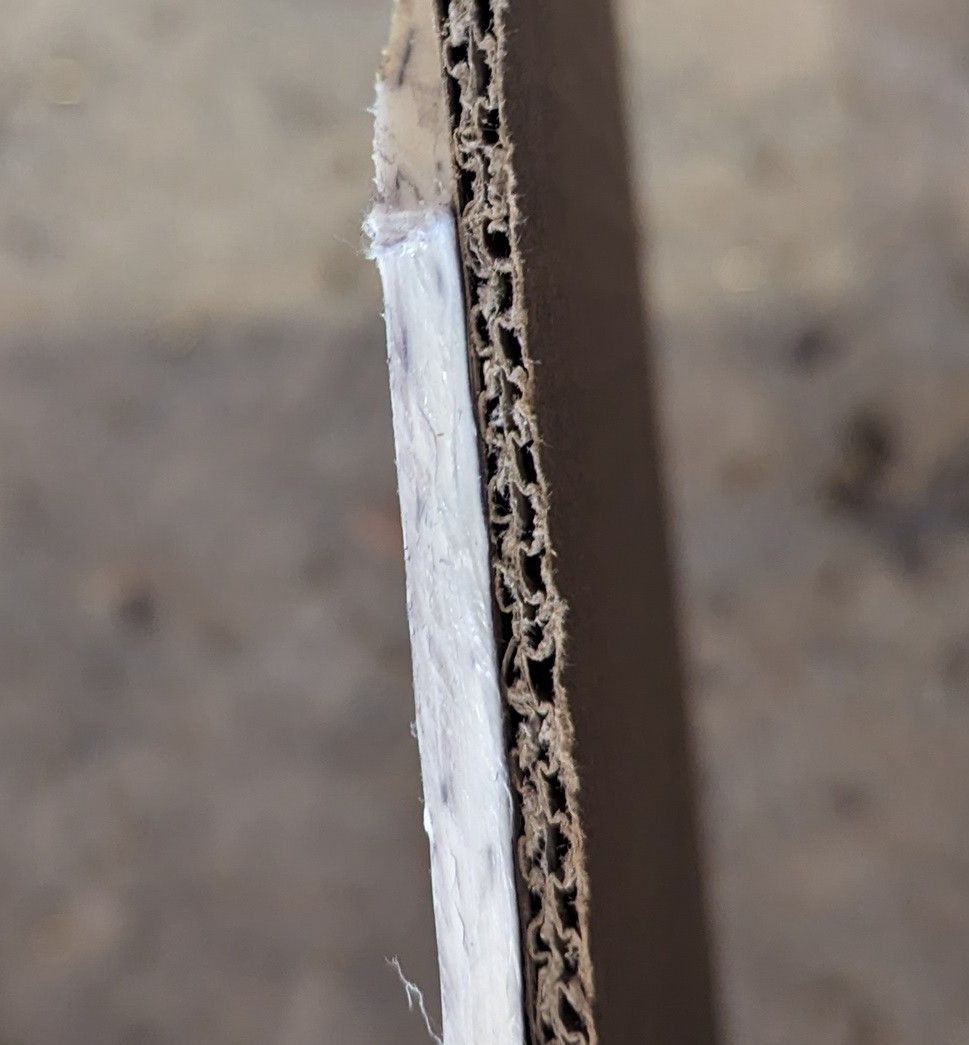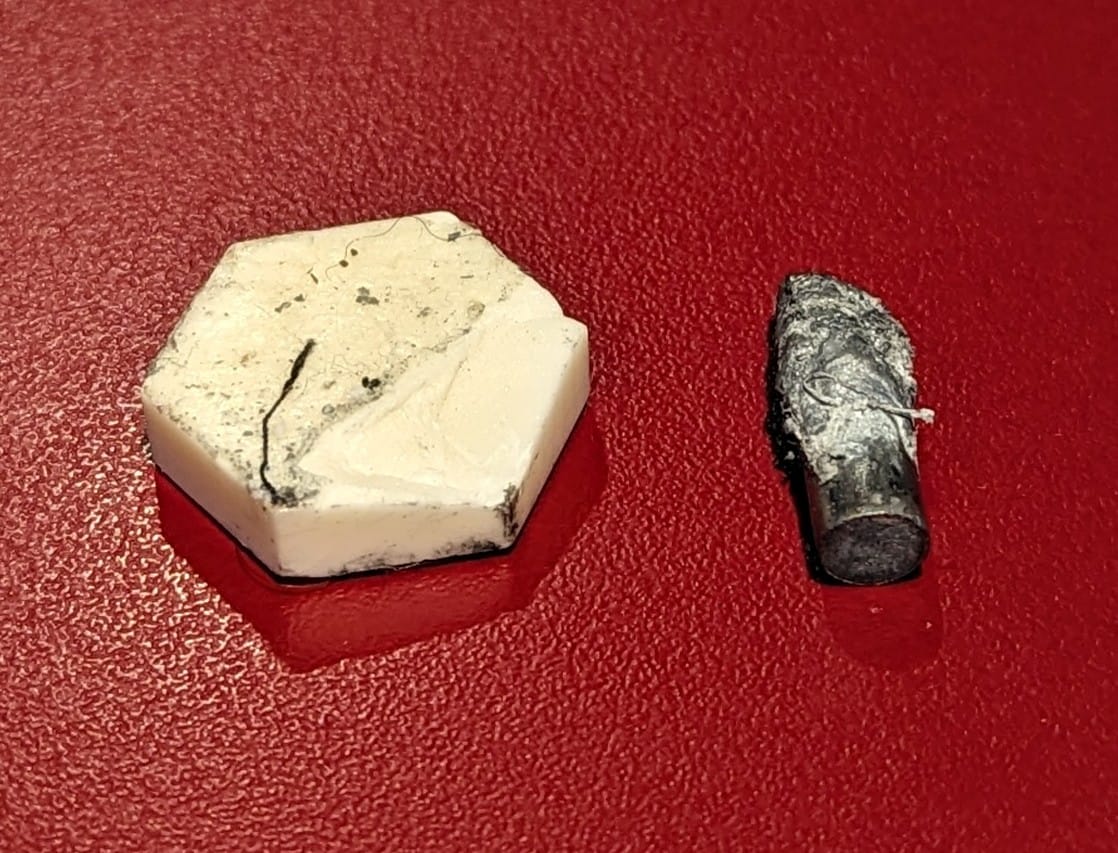Body armor is nothing new and has existed in some form for centuries. From the chainmail of the Medieval era to modern ceramic armor, the technology to protect us from an assailant’s violent attack has progressed substantially in correlation to the weaponry of the time. Arguably, the greatest advancements have occurred within the last 50 years. Milestones like Kevlar, ceramics, and, now, synthetic armor have made significant advancements in the industry.
As someone who wears a bullet-resistant vest every workday, these technological advancements don’t go unappreciated. When evaluating the available options for body armor, I consider several factors (and not necessarily in this order): armor rating, multi-hit capability, weight, durability, and cost. For purposes of today’s discussion, the topic is limited to level IIIA pistol armor (rated to stop .44 Magnum) and level III rifle armor (rated to stop 7.62x51mm M80).
I was recently invited to a body armor demonstration by Stealth Armor Systems. The demonstration was presented by the president of Stealth, Allan Bain. Bain has been in the body armor industry for well over 30 years and revolutionized the industry with the development of flexible rifle armor in 1994. Bain’s original flexible armor design, Dragon Skin, was purchased by Pinnacle Armor in 2000. He continued to improve his design in the following years (more on that later). In my discussions with Bain, he is extremely knowledgeable about the subject of body armor — as he should be — and the quality of his armor is supported by his knowledge.
Stealth Armor Systems’ Soft Pistol Armor
Prior to putting any rounds on armor, I had the opportunity to handle Stealth’s SLXIIIA soft armor. I picked up one of the external vest carriers and laughed because I thought I picked up an empty vest carrier. I was shocked when Bain told me the carrier included ballistic IIIA panels. My current soft body armor has a weight per area of around one pound per square foot. Stealth’s SLXIIIA weighs in at around 0.85 pounds per square foot, making it one of the lightest available options for soft armor. This stuff is extremely light and thin but still rated level IIIA.

While inspecting the armor, I was intrigued by its thickness and grabbed a piece of target board nearby for comparison. This armor is approximately the thickness of target cardboard. While this reduces bulk and improves mobility while wearing the armor, I immediately voiced concerns about the back-face deformation of the armor during ballistic protection.
Here’s the tricky thing about body armor, the material may stop the projectile but armor (especially soft armor) is going to deform from the projectile hitting it. Imagine putting your body next to a baseball net while a Major League pitcher throws a 90 mph fastball at the net. The net may stop the baseball but the momentum of the ball hitting the net will still cause injury to you. Thus, body armor has two duties: stop the projectile and reduce and dissipate the energy of the projectile away from the body. Injury is certain if you’re shot wearing a vest. The goal is to minimize the likelihood of the injury being more severe than a broken rib or bruising.

Bain assured me the soft armor, while thin, offered comparable ballistic protection to industry competitors. He set up a single IIIA soft armor panel against a clay box to measure back-face deformation and proceeded to empty 15 rounds of 9mm 115-grain ball ammo from a 16” rifle into the box from a couple of feet away. The armor stopped every single round with ease. Furthermore, the deformation on the clay box showed nothing outside my previous experience with other available soft armor. According to Stealth, the construction and material of their soft armor is designed to reduce energy transfer into the target. From my observations, it certainly does that.
Hexar Flexible Rifle Armor
Historically, rifle armor has been a hard, single piece composed of steel, ceramic, or some form of polymer or synthetic. Each has its own pros and cons. Steel is heavy and has spalling issues but is cheap and durable. Ceramic is more expensive but lighter. Unfortunately, ceramic is prone to chipping or cracking if dropped and can experience significant degradation in ballistic capability after one strike. Polymer and synthetic plates are light and durable but remain costly.

The next evolution of body armor began with Dragon Skin. Dragon Skin used overlapping two-inch ceramic tiles to create a flexible mesh of rifle-rated armor that was more likely to survive multiple ballistic strikes due to the independent tiles. This allowed the user to have a full coverage flexible rifle-rated vest with significantly more protection than standard front and side plates. The concept, while sound, ran into issues under Pinnacle Armor long after Bain had no involvement in production or quality control.
Despite the brilliance of Dragon Skin’s design, Bain didn’t cease improving on it. One of the issues with Dragon Skin was the overlapping tiles added bulk and weight. They also shift easily with degradation of the adhesive. Stealth Armor took a different approach by making the hexagonal tiles smaller, approximately ¾”, and butting the edges against each other instead of overlapping. The ceramic tiles are set tightly into a synthetic mesh with an adhesive holding it in place. I should note I compared the quality of this adhesive against another brand of heavily advertised flexible rifle armor. Stealth’s adhesive was far stronger in my opinion (also, the tiles on the competitor were much larger than Stealth’s, reducing its multi-hit capability).
My first thought was to be cautiously skeptical of this design. Frankly, the lack of overlap on the tiles led me to believe this would be a point for a rifle projectile to work its way between tiles and, subsequently, the armor. Physics, as Bain put it, dictates otherwise. If a tile is hit directly by a round, the tile will pulverize from the impact while stopping it. This design is partly what makes the vest multi-hit capable. For instance, a single-piece ceramic vest is normally compromised after one or two projectile strikes due to propagation of the projectile impact’s energy on the ceramic. The tile mosaic reduces this propagation and isolates it to that single tile.

As I saw during testing, projectile strikes on the edge of a tile were extremely effective at stopping it. The tile’s edge was chipped but the steel core 7.62x39mm projectile fired from 15 feet away was mangled and stopped by the armor. This occurs because the tight matrix of tiles creates a pinch point for the bullet, even if the armor is curved and causing a slight separation in the tiles. As the bullet strikes the ceramic edge of the tiles, they move with the bullet and effectively cause a pinch point on the projectile. The explanation made sense to me but I was naturally skeptical — until I put rounds into the armor.

Shooting Hexar and Final Thoughts
The Hexar Armor, a standalone Level III flexible armor, is unique within the industry. The demonstration on Hexar began with three rounds of M855 ball into the armor from about 15 feet. The rounds stopped easily with mild back-face deformation. I was allowed to put the remaining eight rounds on the plate which consisted of three 5.56 green tip in a 1” triangle followed by three rounds of bi-metal 7.62x39mm in a similar 1” triangle. The final two rounds were steel core 7.62x39mm rounds spaced about three inches apart. The plate, while heavily compromised, stopped all of them.

From the demonstration, Stealth Armor Systems obviously builds an impressive product with a significant amount of knowledge and experience behind the construction of their products. They offer a wide range of options for their armor from full coverage IIIA vests to rifle plates featuring their Hexar Armor design in a variety of threat levels. Prices are available on their website and range from as low as $350 for standalone plates to as high as $2,400 for lightweight full coverage level III rifle armor.
Regardless of price, the armor’s performance speaks for itself. Furthermore, after seeing it in action and wearing it, the multi-hit capability and lack of bulk is impressive. Their full coverage rifle armor wears like a standard soft armor pistol vest and doesn’t limit mobility like bulky rifle plates do. With slightly more weight than standard soft armor, Hexar armor offers exceptional threat protection from multiple hits with greater coverage than solid plate armor. As my current armor reaches the end of its service life, Stealth Armor Systems will be at the top of my list for purchase.


